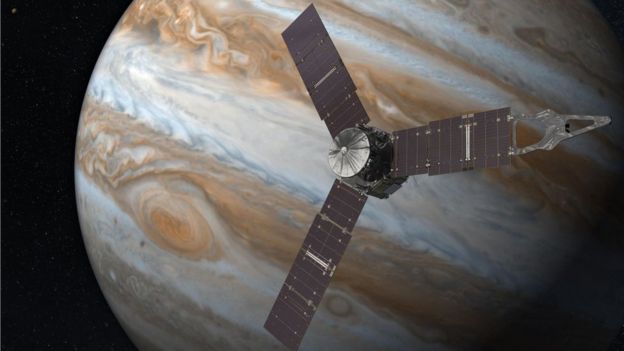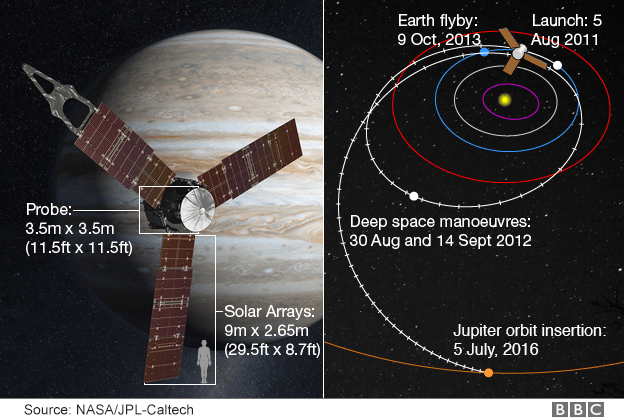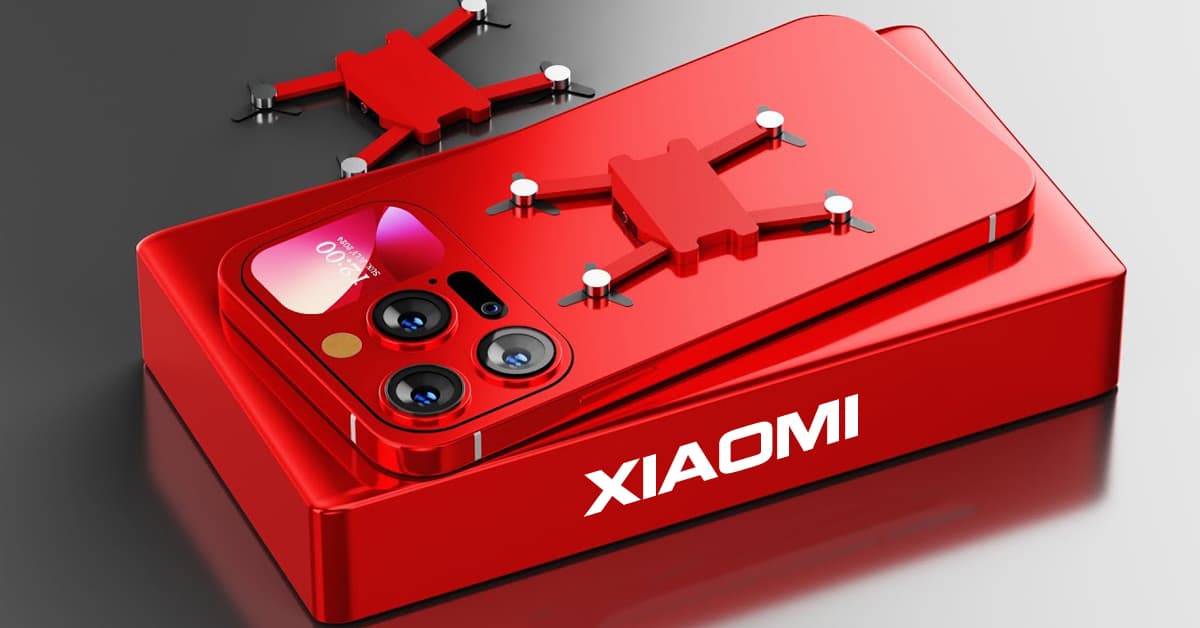Juno – NASA Spacecraft enters Jupiter’s orbit
Another great piece of news for our humankind has submerged over the internet starting today: Juno – the NASA spacecraft – has successfully enters the orbit of Jupiter

Juno enters Jupiter’s orbit sucessfully
Juno is the solar-powered spacecraft from the US space agency which left Earth 5 years ago. Just recently, the craft had to fire a rocket engine to slow down its velocity, squeeze through a narrow band, skim Jupiter’s surface and enable it to get captured into Jupiter’s hefty orbit. The spacecraft had successfully gone as planned, and extraordinarily avoided both the planet’s radiation belt and its dangerous dust rings. As soon as the radio message was received from earth, everyone at NASA’s mission control in California went overjoyed cheering the significant achievement human being made thus far.
After the historic moment came true, the proud scientists at NASA hold a press conference. They shared with joy the contingency communication strategy” they had prepared in case things went wrong. “To know we can go to bed tonight not worrying about what is going to happen tomorrow, is just amazing,” Diane Brown, a project manager from NASA’s Jet Propulsion Laboratory said. Turned out it was such a victory and once-in-a-lifetime glory. “All stations on Juno co-ord, we have the tone for burn cut-off on Delta B,” Juno Mission Control had announced. “Roger Juno, welcome to Jupiter.”

Just so you know how huge the occasion is, this is what Scott Bolton, the principle investigator of this Juno mission said to his colleagues: “You’re the best team ever! We just did the hardest thing NASA has ever done.” Yes, it is not at all overrated when saying this is the hardest things NASA, or even the human race has ever achieved. Because of the intense radiation from Jupiter’s surface which has huge destruction power, no other spacecraft had dared to pass close to the planet.

The initial plan for this project is to use the spacecraft to sense how deep Jupiter’s interior actually is. The scientists think that Jupiter may not have formed where it is today. So by knowing how much water Jupiter has, they would know where the planet had formed early in the Solar System. And knowing where Jupiter formed will tell them a lot about how the whole Solar system was formed in general.
NASA plan to put Juno straight to Jupiter’s center
Now that Juno has successfully enter Jupiter’s orbit, it will orbit the plant once every 53 days until October 14, 2016. After that milestone, the craft will shift to a more intense orbit of 14 days. As NASA planned, after around 20 months of adapting to Jupiter’s interior and atmosphere, Juno will then head to the center. The future is just bright knowing that…. (Source: BBC News)






